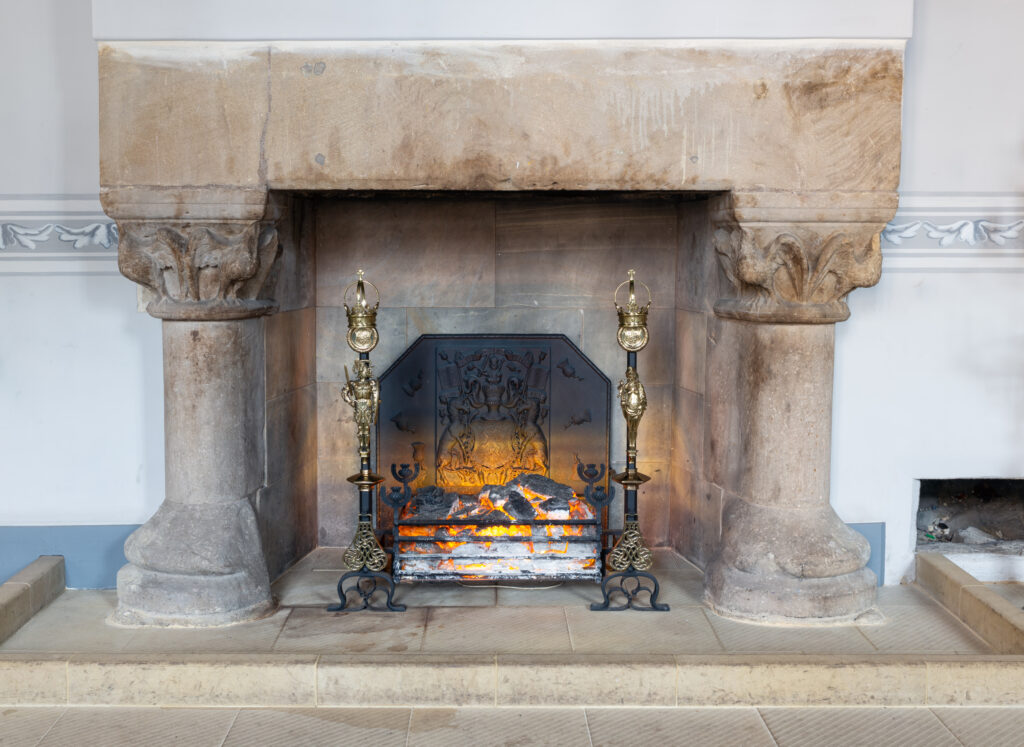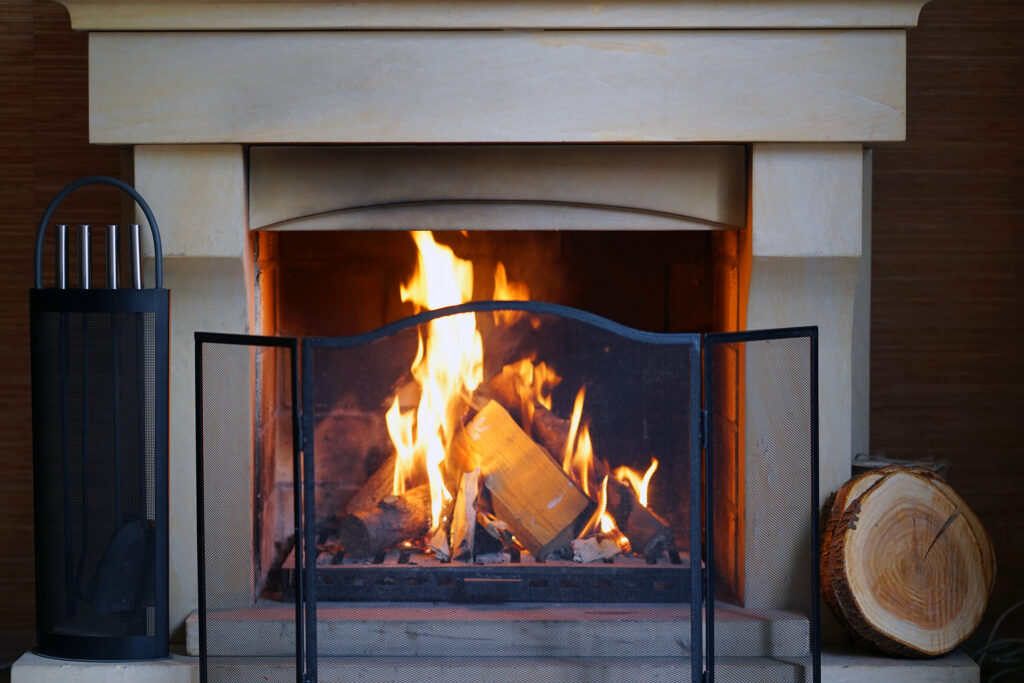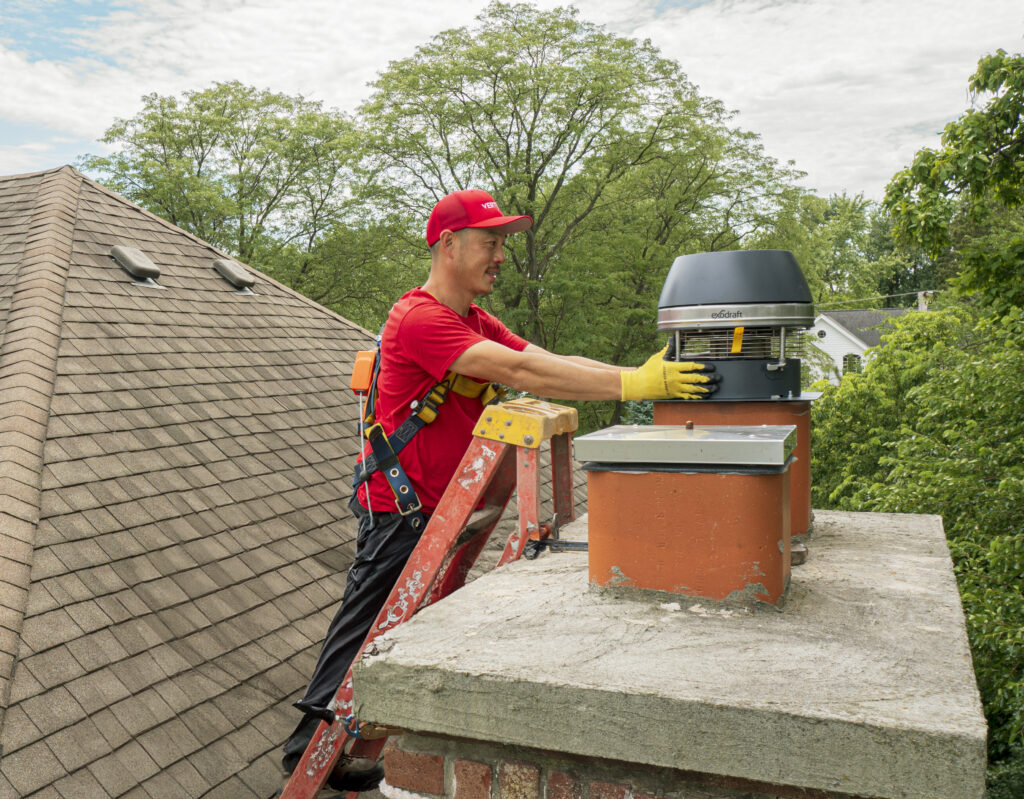
Fireplace design has significantly transformed over the decades, transitioning from a purely functional element to a pivotal aesthetic component of home decor. This evolution reflects changes in technology, materials, and homeowner preferences. As your trusted home renewal partner, we understand the importance of blending functionality with style. The right fireplace can not only provide warmth but also serve as a central piece in your living space that reflects your own personal taste. Exploring various fireplace design ideas can help you identify the perfect match for your home, whether you're renovating an existing space or designing a new one.
In this article, we will take you through the journey of fireplace design, from the early designs centered around necessity to the modern fireplace design that focuses on aesthetics as much as utility. You'll discover how the Industrial Revolution sparked changes in fireplace technology and appearance, leading to a wide range of fireplace mantel design ideas. From there, we'll delve into contemporary trends and modern fireplace design. Finally, we'll look into future trends in fireplace design, giving you insight into what's next. This guide aims to teach you the history of the fireplace and equip you with knowledge and inspiration for choosing or updating your fireplace.
Early Fireplace Designs
Medieval Origins
During the Medieval period, fire pits were centrally located inside rooms, with smoke escaping through a ceiling hole. By the 11th century, as two-story buildings became common, fireplaces moved to external walls, prompting the invention of the modern chimney. In the 1600s and early 1700s, typical fireplaces were wide, deep, and mantel-less, designed primarily for walk-in access.
Renaissance Transformations
The Renaissance period marked a significant evolution in fireplace design, inspired by classical art and architecture from ancient Rome and Greece. Notably, during the 19th century, the Neo Renaissance style brought about intricate and rich designs in fireplace mantels. These designs often featured linear and geometric shapes intertwined with natural motifs like vines and acanthus leaves, showcasing the era's sophisticated craftsmanship.
The Industrial Revolution Impact
Technological Innovations
During the Industrial Revolution, the design and functionality of fireplaces underwent significant changes. The introduction of the Northern European-style chimney around 900 to 1,000 years ago marked a pivotal advancement, improving smoke ventilation and air quality in homes. This innovation allowed for the construction of buildings with fireplaces in multiple rooms and on various levels. Count Rumford's creation of a shallower firebox with steeply angled sides towards the end of the 18th century enhanced radiant heat distribution and reduced backdrafts which revolutionized fireplace efficiency.
Material Advancements
The Industrial Revolution also introduced standardization in fireplace construction, particularly with the widespread use of cast iron. The Adam Brothers, notable designers of the era, developed fireplaces that required less space and utilized higher quality materials. This period saw the division of the fireplace into two main components: the surround, including the mantelpiece and side supports, and the insert, typically made of cast iron. These advancements not only improved the functional aspects of fireplaces but also contributed to the ambiance of home interiors.
Modern Fireplace Styles
Contemporary Designs
Modern fireplace styles celebrate minimalism and innovation, featuring sleek designs that integrate seamlessly into your living space. The trend leans towards ribbon fireplaces that boast a long, narrow opening and are often surrounded by luxurious materials like stone or metal. These fireplaces not only serve as a heating element but also as a striking visual centerpiece in both large and small rooms. Additionally, the integration of technology allows for certain fireplaces to have customizations such as adjustable flame height and color.
Eco-friendly Options
As environmental awareness increases, eco-friendly fireplaces have become an important part of modern home design. Ethanol fireplaces stand out as a top choice for those seeking sustainability without compromising on style. These fireplaces burn bioethanol, a renewable energy source that emits no smoke and requires no venting, making them ideal for indoor air quality. Another innovative option includes electric fireplaces, which are highly efficient and can be powered by renewable energy sources. These models offer the warmth and aesthetic of a traditional fireplace, while being better for the planet.

Future Trends in Fireplace Design
Smart Fireplaces
As technology advances, the integration of smart home features into fireplace design is becoming increasingly prominent. Many fireplaces are not only easy to use but also integrate seamlessly with home automation systems. Features like voice control through devices such as Amazon Alexa or Google Assistant and remote monitoring via smartphone apps for optimal energy efficiency are setting the new standard. These innovations offer you convenience and control with remote settings and automatic safety features.
Sustainable Solutions
The future of fireplace design is also steering towards sustainability. Ethanol fireplaces, for instance, use bioethanol fuel which is a renewable energy source that burns clean without emitting smoke or ash. This type of fireplace does not require venting, which simplifies installation and reduces costs. Furthermore, the market is seeing a rise in fireplaces that use materials like recycled metal, reducing the environmental footprint even further. These eco-friendly fireplaces not only support sustainable living but also align with modern aesthetics.
Fireplace Design Evolution
Through the decades, fireplace design has evolved from a necessity for warmth into a central piece of home decor. This journey from the medieval hearths to the sleek, eco-friendly fireplaces of today underscores the blend of functionality and environmental consciousness that define modern living spaces. The exploration of fireplace design highlights not only the significance of this integral home feature but also the continuous innovation towards sustainability and smart technology integration.
As we anticipate the future trends, incorporating smart and sustainable solutions will undoubtedly become a standard. Whether you are renovating your current space or crafting a new haven, the right fireplace can elevate your home's ambiance. For those interested in fireplace or chimney repair, inspection, or cleaning, do not hesitate to schedule an appointment today!
